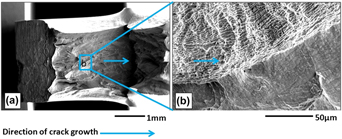Crossref Citations
This article has been cited by the following publications. This list is generated based on data provided by
Crossref.
Onal, Orkun
Ozmenci, Cemre
and
Canadinc, Demircan
2014.
Multi-Scale Modeling of the Impact Response of a Strain-Rate Sensitive High-Manganese Austenitic Steel.
Frontiers in Materials,
Vol. 1,
Issue. ,
Onal, O.
Bal, B.
Canadinc, D.
and
Akdari, E.
2015.
Experimental and Numerical Evaluation of Thickness Reduction in Steel Plate Heat Exchangers.
Journal of Engineering Materials and Technology,
Vol. 137,
Issue. 4,
Mirzajanzadeh, M.
and
Canadinc, D.
2016.
A Microstructure-Sensitive Model for Simulating the Impact Response of a High-Manganese Austenitic Steel.
Journal of Engineering Materials and Technology,
Vol. 138,
Issue. 4,
Bal, B.
Gumus, B.
and
Canadinc, D.
2016.
Incorporation of Dynamic Strain Aging Into a Viscoplastic Self-Consistent Model for Predicting the Negative Strain Rate Sensitivity of Hadfield Steel.
Journal of Engineering Materials and Technology,
Vol. 138,
Issue. 3,
Elias, C. N.
Fernandes, D. J.
and
de Biasi, R. S.
2017.
Comparative study of compressive and fatigue strength of dental implants made of nanocrystalline Ti Hard and microcrystalline Ti G4.
Fatigue & Fracture of Engineering Materials & Structures,
Vol. 40,
Issue. 5,
p.
696.
Bal, Burak
2018.
A Study of Different Microstructural Effects on the Strain Hardening Behavior of Hadfield Steel.
International Journal of Steel Structures,
Vol. 18,
Issue. 1,
p.
13.
Bal, B.
Karaveli, K. K.
Cetin, B.
and
Gumus, B.
2019.
The Precise Determination of the Johnson–Cook Material and Damage Model Parameters and Mechanical Properties of an Aluminum 7068-T651 Alloy.
Journal of Engineering Materials and Technology,
Vol. 141,
Issue. 4,
Jia, Zhaojun
Xiu, Peng
Roohani-Esfahani, Seyed-Iman
Zreiqat, Hala
Xiong, Pan
Zhou, Wenhao
Yan, Jianglong
Cheng, Yan
and
Zheng, Yufeng
2019.
Triple-Bioinspired Burying/Crosslinking Interfacial Coassembly Strategy for Layer-by-Layer Construction of Robust Functional Bioceramic Self-Coatings for Osteointegration Applications.
ACS Applied Materials & Interfaces,
Vol. 11,
Issue. 4,
p.
4447.
Łukaszewicz, Adrian
Kopec, Mateusz
Szczęsny, Grzegorz
and
Kowalewski, Zbigniew L
2023.
Characteristics of orthopaedic implants damage and mechanisms of its initiation.
International Journal of Damage Mechanics,
Fan, Zhehang
Ren, Junzhao
Li, Qinghua
Dai, Hao
Tao, Xiaoyong
Khan, Aqib Mashood
and
Wu, Hongyan
2024.
Molecular dynamics simulation of gradient alloying distribution on the nano-mechanical properties of Nb-Zr alloys.
Physica Scripta,
Vol. 99,
Issue. 12,
p.
125943.
